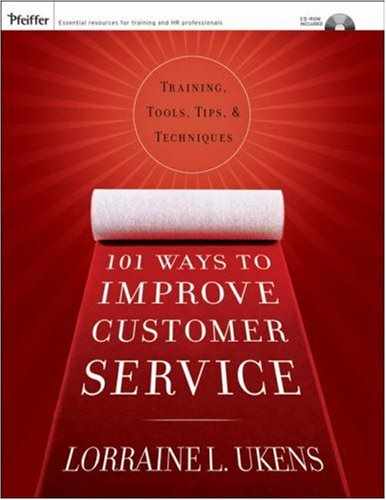When confronted with an angry person, you first have to accept that anger is a legitimate emotion—one that many of us find difficult to express appropriately. Therefore, when a person does express anger, you must assume that there is a valid reason for it. You also should recognize that some people are more volatile than others, some have less self-control, and some respond more to “gut reaction” than to logic. Here are some guidelines for managing an angry customer:
Respond with a firm approach and a direct facial expression. Maintain a calm and composed stance throughout the encounter.
Attract the customer’s attention by saying his or her name, if possible. Keeping eye contact, follow through immediately with a short statement, showing you recognize and acknowledge the anger: “You are obviously very annoyed; what exactly went wrong?”
Empathize, acknowledging the customer’s point of view. It is important that you don’t imply that the company is a mess or that the staff is incompetent. Professionalism and loyalty to the organization must be paramount.
Establish the facts of the situation while keeping a calm, even tone and level of voice.
If appropriate, apologize once and sincerely for the inconvenience caused by any error or misunderstanding, then set about putting things right.
Repeat your statement of intent until the customer calms down. It may be possible to offer an alternative: “Would you like to speak to the manager?”
Ask if anything further can be done to improve things and, if the person has any suggestions, use active listening to check facts. Affirm that you have heard and understood.
If the situation gets out of control, call for a manager or offer to have someone call the customer back. Remember that you have the right to be treated with respect and not to be threatened.
Stay calm.
Maintain a neutral posture, facial expression, and tone of voice. Keep steady eye contact.
Allow the other person some time to “let off steam.”
Acknowledge the person’s anger and empathize, as appropriate.
Listen well and let the other person know that you heard and understood what was said.
Try to establish the cause of the anger and do what you can to establish a solution, a workable relationship, a compromise, or some other positive outcome.
Help the other person behave assertively, rather than aggressively, by your example.
Don’t show impatience or annoyance.
Don’t let the customer dominate the conversation; gently intervene by restating what was said and then move the conversation along.
Don’t get sidetracked by other issues.
Don’t cut off the other person’s speech too abruptly; treat the situation with care and sensitivity.
Don’t overdo your apology or place blame on other employees and the organization.
